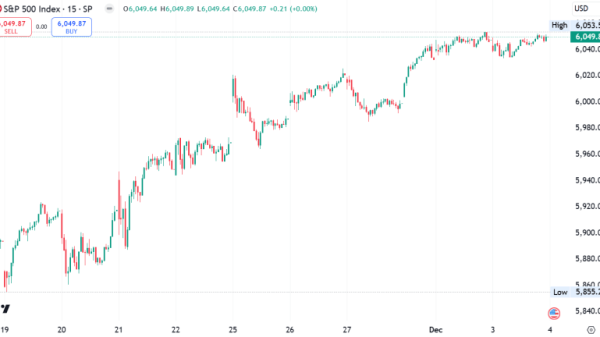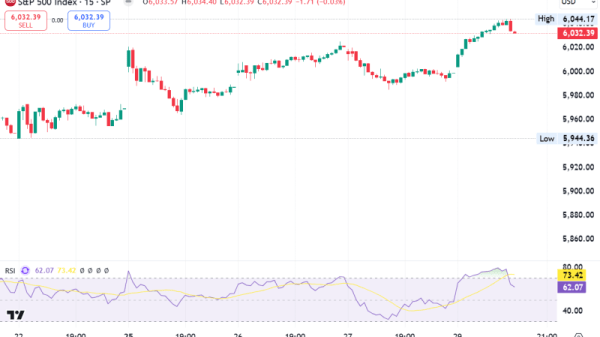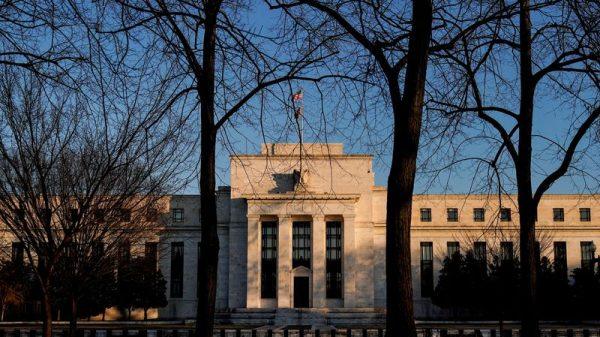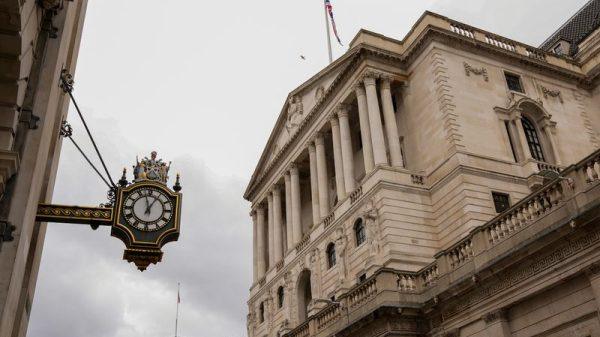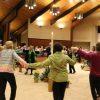By Jamie McGeever
ORLANDO, Florida (Reuters) – Even bulls now admit that U.S. stocks and credit are expensive.
While many argue that the rosy macro outlook will keep the party going into next year, they’re cautious that the inevitable hangover will set in soon thereafter. But not yet.
Wall Street’s three main indices hit record highs last week, continuing the red-hot rally that began over a year ago. Since the Fed ‘pivoted’ away from raising interest rates in October last year the Nasdaq is up over 50% and the world’s biggest company, Nvidia (NASDAQ:NVDA), has seen its stock price surge 250%.
Remarkably, the S&P 500 is having one of its best calendar years since 1928.
Meanwhile, the yield spreads of investment- and junk-grade corporate debt over Treasuries have shrunk to razor-thin levels. By some measures, they are the narrowest they have ever been.
There’s no cast-iron way of measuring how much a market is over-valued. But by any reasonable assessment, these are warning signs.
‘REVERSE GOLDILOCKS’
Analysts at Morgan Stanley (NYSE:MS) still recommend buying U.S. equities and credit over their international peers. But they also note that the ‘bull versus bear case skew’ next year is unusually wide due to the massive uncertainty surrounding the “substance, severity, and sequencing of fiscal, trade, and immigration policies” of the incoming Trump administration.
Their base case for the S&P 500 is 6500, up around 10% from Monday’s close. But their bull and bear cases call for 24% upside potential and 23% downside risk, respectively, a wide skew indeed.
Their peers at HSBC also remain ‘constructive’ on risk assets and see further upside potential for Wall Street in 2025, especially in the first half of the year. But they warn that U.S. markets are right at the edge of what they call the ‘Danger Zone’.
They have constructed an interest rate swaps model that shows what could happen if rates rise above a certain point. If this trigger is tripped – and remains tripped – a ‘reverse Goldilocks’ move beckons, and riskier assets like stocks, credit and emerging market debt come under pressure.
The trigger for the danger zone in the current model is a 10-year Treasury yield of just under 4.5%, exactly where we are right now.
“Put simply, if we were to push sustainably above 4.5% … this would very likely create ‘havoc’ across all major asset classes,” they wrote on Monday. “That’s by far the biggest risk to our constructive view right now.”
KEEP DANCING
While Wall Street analysts are chasing their optimistic projections with a bit of caution, investors are increasingly becoming straight-up bulls.
According to the American Association of Individual Investors’ latest survey, bullish sentiment, or expectations that stocks will rise over the next six months, is now elevated at an “unusually high” 49.8%.
In the decades since the AAII sentiment survey started in 1987, the bullish sentiment reading has only been above the 50% threshold around 10% of the time.
Asset managers may be reluctant to dampen this enthusiasm. Even if they’re correct that a correction is due, they need to get the timing right. And nailing that is typically due more to luck than any fundamental, technical, historical, mean reversion, or standard deviation analysis.
That’s because simple FOMO – ‘fear of missing out’ – is a powerful force that can keep the investor optimism merry-go-round spinning longer than it should.
In investing, being too early usually makes you look like a fool rather than an oracle. So it takes a brave fund manager to advise their clients to reduce exposure to an asset or market that is on a long and significant uptrend.
“As long as the music is playing, you’ve got to get up and dance,” said former CEO of Citi Charles “Chuck” Prince in July 2007, about the leveraged buyout market as signs of stress began to appear. “We’re still dancing.”
Today, the music is beginning to sound a little discordant, but investors still seem happy to sing along.
(The opinions expressed here are those of the author, a columnist for Reuters.)

